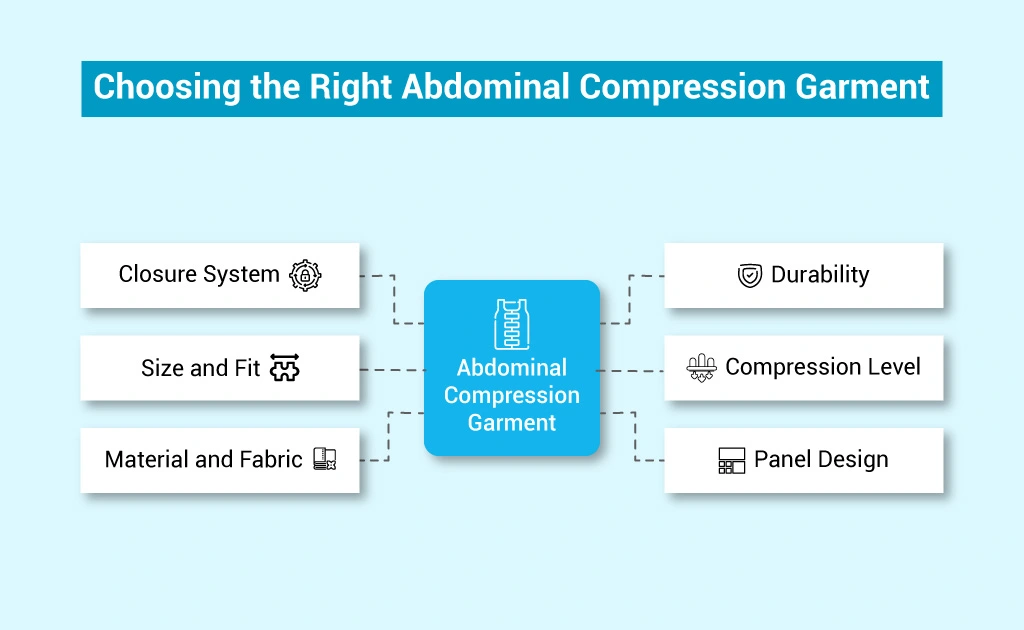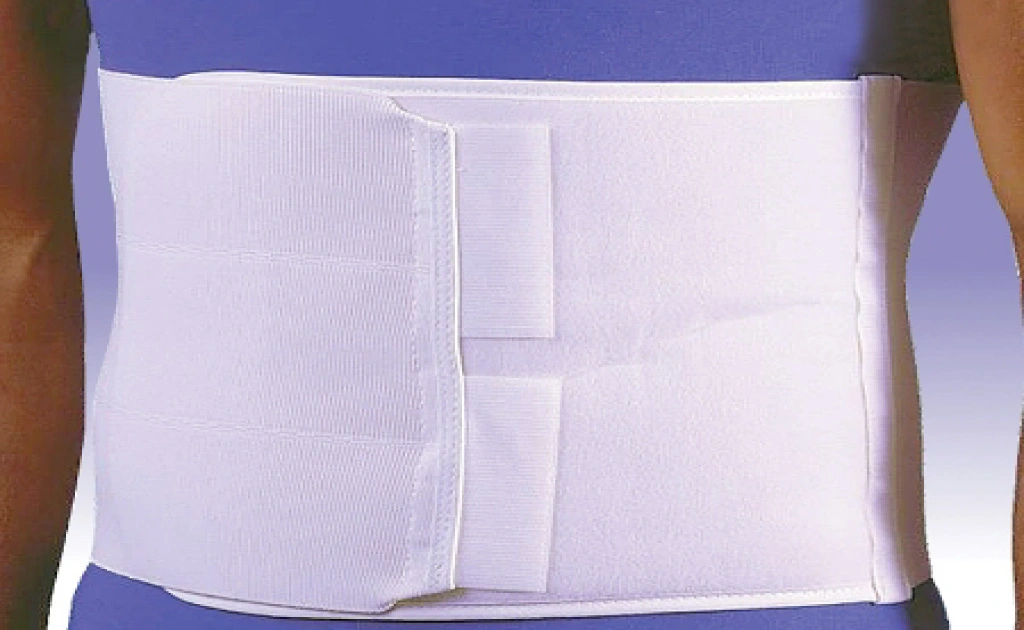If you're looking into compression abdominal garments, chances are recovery or support is top of mind. Maybe it's following post-surgery, maybe you're dealing with a post-injury, or maybe you’re just trying to understand whether this thing that looks like a glorified waistband actually works. The term ABDOMINAL COMPRESSION GARMENT pops up frequently, and for good reason. It’s a simple device with surprisingly wide-reaching benefits.
At first glance, it might just seem like an elastic wrap. But when you start using on, especially after surgery, you begin to understand why so many surgeons recommend them. They’re not magic, but they’re close to essential for post-surgical recovery. And like most tools, their effectiveness depends on how well you use them.
What is an Abdominal Compression Garment?
An abdominal binder after surgery is usually a wide band of elastic or neoprene that wraps tightly around your torso. It’s often fastened with Velcro or hook-and-eye closures and is meant to apply even, consistent pressure around the abdomen.

These garments are commonly used after abdominal surgeries. The pressure they provide can help reduce swelling, support healing tissues, and make movement less painful. I remember using one after a laparoscopic procedure, it didn’t just support my incision, it made me feel more stable when walking, sneezing, even just standing up straight.
Some garments are basic: one piece of fabric, single closure, one size fits all. Others are more advanced, with multi-panel designs, breathable fabric, silicone grips, and tailored fits. The variety can be overwhelming, but it also means there's a version suited to nearly every need and body type.
When are Abdominal Compression Garments Used?
You'll most often hear about a compression garment after surgery, particularly abdominal procedures. Tummy tucks, C-sections, hysterectomies, hernia repairs, liposuction, the list is long. But they’re also useful in non-surgical scenarios, like post injury recovery or core support during extended periods of inactivity.
Here are some common use cases:
Postpartum recovery: Often prescribed after C-sections to help with healing and to reduce pain.
Cosmetic surgery: After abdominoplasty or liposuction to maintain body contour and support skin retraction.
Medical surgeries: Such as hernia repair or colorectal surgery, where supporting abdominal walls helps prevent complications.
Injury recovery: For muscle strains or core injuries that benefit from immobilization or added support.
A surgeon might recommend an abdominal compression garment post surgery for two to six weeks, depending on the complexity of the procedure. Sometimes longer. Personally, I started with a medium-compression garment after a simple laparoscopic surgery and wore it for about three weeks, longer than advised, but it helped me feel stable.
Medical and Post-Surgical Benefits of Abdominal Compression
Let’s get into it, what exactly are the real, proven benefits of wearing an abdominal compression garment? It might seem like just another layer of fabric, but for anyone going through post surgical recovery, its impact is often much deeper than you’d expect.
Reduced Swelling and Bruising
One of the most immediate and visible effects of abdominal compression is reduced swelling. After surgery, your body responds with inflammation and fluid buildup, which is a natural part of healing, but too much swelling can slow things down. Compression helps limit this buildup by applying steady, gentle pressure, which promotes lymphatic drainage and prevents fluid from pooling. The result? Less puffiness, less bruising, and, most importantly, less discomfort. In some studies, patients using compression garments after procedures like abdominoplasty saw up to 50% reduction in edema compared to those who didn’t. That’s not a small improvement, it’s the kind that makes a difference in how soon you can return to normal life.
Better Blood Circulation
A post surgery garment doesn’t just reduce swelling; it encourages better blood flow through the affected area. This circulation boost delivers more oxygen and nutrients to healing tissues, which can help speed up recovery and reduce the likelihood of complications like blood clots. Particularly for surgeries that involve long periods of immobility, promoting circulation is critical to avoid risks like deep vein thrombosis (DVT).
Pain Management
One often overlooked benefit? Pain control. After surgery, even basic movements, like sitting up or coughing, can strain your abdominal area. A properly fitted compression garment supports your core and helps stabilize muscles and incisions, reducing the intensity of these micro-movements. For many patients, this translates into noticeable pain relief. Personally, I found that wearing a binder made my post-op days far more bearable, especially during the first week, when every movement felt uncertain.
Incision Protection and Posture Support
Beyond pain and swelling, compression provides critical incision support. It keeps the skin and underlying tissues aligned, minimizing the risk of stitches pulling or reopening. And with better support comes better posture, something that’s often compromised when you're sore and stiff. Even light waist compression gently encourages a more upright stance, which helps healing and can prevent long-term posture issues.
Emotional and Psychological Comfort
Finally, there’s the less tangible but still meaningful benefit: confidence. Wearing an abdominal binder can give you that subtle sense of security, of being “held together”, that makes a world of difference when you’re physically vulnerable. It won’t replace medical treatment, but it will make recovery feel just a little more manageable. And sometimes, that’s exactly what you need.
How to Choose the Right Abdominal Compression Garment
Not all devices are created equal. Choosing the right medical abdominal compression garment can make the difference between helpful and unbearable.

Key Considerations
Size and Fit: Measure your waist and hips, and don’t guess. A garment that’s too small may restrict breathing or circulation; too large, and you lose the benefits of abdominal compression. Most brands provide a size chart, follow it closely.
Compression Level: Choose between mild, moderate, and firm compression. For general post surgical recovery, medium is often ideal, but your surgeon may recommend something specific.
Material and Fabric: Look for breathable fabric, you’ll be wearing it for hours, even days. Cotton blends are soft but less elastic; spandex or neoprene blends offer better stretch and support.
Panel Design: Multi-panel designs (like 3- or 4-panel options) allow for more customized fit and flexibility. These don’t bunch up as easily and contour better to the body.
Closure System: Velcro is easy to adjust throughout the day. Hook-and-eye closures offer more structure but can be harder to put on alone.
Durability: You’ll probably be washing it frequently, so check that the stitching and elasticity can handle daily use.
How to Wear and Care for an Abdominal Compression Garment
Wearing your abdominal compression garment correctly is just as important as buying the right one.
How to Wear It:
- Align it with your navel and wrap it snugly around your waist.
- It should be tight enough to provide support, but not restrict breathing.
- Check for bunching or uneven pressure, adjust if needed.
- Wear over a light cotton layer if your skin is sensitive.
- Use as directed, typically worn during waking hours and sometimes even while sleeping during early recovery.
How to Care for It:
- Wash gently: Hand-wash or use a delicate cycle with cold water.
- Avoid heat: Don’t tumble dry or expose to high heat, this degrades elastic fibers.
- Rotate garments: If possible, have two, one to wear, one to wash.
- Check regularly: Replace if it starts to lose compression or becomes too loose.
Tips to Maximize Healing Potential with Abdominal Compression
Wearing a compression garment is just one part of the recovery puzzle. It's incredibly helpful, but how you use it, when you use it, and what you do alongside it can either support or slow your progress. Here’s how to get the most from your abdominal binder and enhance your healing.
1. Follow Your Wear Schedule
It sounds simple, but consistency matters more than you think. If your surgeon advises 20 hours a day, stick to that. Wearing it intermittently or skipping days, especially early on, can lead to unnecessary swelling or delay healing. Some people get overconfident once the pain subsides, but that can be deceptive. The internal healing continues even when symptoms ease. I made the mistake of skipping it for a day too early, and the tightness and discomfort came right back. Lesson learned.
2. Incorporate Gentle Movement
Sitting still for days isn’t ideal for recovery. Light movement helps circulation, reduces the risk of blood clots, and actually promotes faster tissue healing. Start small, five-minute walks inside your home are enough initially. Keep the abdominal compression garment on during these walks for added support. As strength returns, you can increase the duration gradually.
3. Listen to Your Body
Compression should feel snug, not suffocating. If you notice shallow breathing, numbness, or irritated skin, loosen the garment slightly. Everyone’s tolerance is different. Your binder isn’t supposed to hurt, it’s supposed to help. If something feels off, it probably is.
4. Stay Cool and Comfortable
Compression wrap support made from breathable fabric will be your best friend, especially in warm or humid environments. Avoid plastic-like synthetics that trap heat and moisture. They’ll only lead to skin irritation and discomfort, which can tempt you to stop wearing the garment altogether.
5. Complement with Other Recovery Methods
Pair the binder with cold compresses (for inflammation), lymphatic drainage massage (if cleared by your doctor), and light stretching. Together, these steps reduce swelling, encourage healing, and prevent stiffness.
6. Taper Off Gradually
When it’s time to stop using your abdominal binder after a few weeks, ease out of it. Wear it for shorter periods each day rather than quitting cold turkey. Your body adjusts more smoothly this way, and you’ll notice a clearer transition into full mobility.
Best Abdominal Compression Garment in Anthony Products
If you’re looking for the best abdominal compression garment, Anthony Products offers a standout lineup that blends functionality with comfort.

Their 3-Panel Deluxe Abdominal Binder and 4-Panel Binder are especially popular among post-op patients and healthcare providers.
Highlights:
- Custom fit: Available in a wide range of sizes and lengths (9", 12") for full abdominal coverage.
- Durable and adjustable: Velcro closures that last through frequent wear and washing.
- Comfortable design: Made from breathable fabric that doesn’t overheat the body.
- Excellent support: Offers the right level of compression without feeling restrictive.
- Easy maintenance: Machine-washable and holds its shape better than many competitors.
If you're in post surgical recovery, their binders make a noticeable difference in swelling and mobility. From personal experience, they’re worth the investment for smoother healing.
Conclusion
A well-chosen abdominal compression garment can play a huge role in your post surgery process. From easing pain and swelling to helping you move with more confidence, it’s one of those tools that, while simple in design, makes a big impact.
Whether you’re recovering from surgery, managing a post injury, or looking for better waist compression, understanding how to choose, use, and care for your garment is essential. Look for breathable fabric, the right fit, and trusted brands like Anthony Products for reliable results.
Most importantly, don’t rush your recovery. Let the abdominal compression do its job, track your progress, and adjust as needed. Healing isn’t always fast, but with the right support (literally), it can be a lot smoother.

